You are your own enemy until you aren’t.
Most of the time, it is you who gets in the way of yourself.
Your mind—in an effort to protect yourself from further hurt—sets up reactive patterns that cause you to feel hurt again, and it often does this in a subtle and unconscious way.
Projection and PTSD
Feeling hurt, when you are dealing with post-traumatic stress, isn’t something that is still going to happen to you. It has already happened, and that pain continues in the present moment; however, from your mind’s perspective, it feels like it is about to happen again.
Your hurt, uncontained and unprocessed, keeps projecting itself outward onto your circumstances and relationships. You will be constantly on the lookout as if you are going to be in danger again.
Your mind—in an effort to protect yourself from further hurt—sets up reactive patterns that cause you to feel hurt again, and it often does this in a subtle and unconscious way.
That vigilance can be healthy if you have somewhat processed your past, your emotional residue. It can give you an edge in recognizing what kind of situation you are in or what kind of person you are dealing with: “Is this person or circumstance safe or not safe? Can I open up, or do I need to confront, or walk away?”
How PTSD Dissociation Perpetuates the Issue
When that discernment isn’t there, but is clouded by your past, you will react with avoidance or confrontation when the moment doesn’t call for it. As a result, you either implode or explode emotionally, which leaves you drained and miserable.
I repeat; your pain isn’t something that is about to happen. It is happening all the time in the here and now. It is the avoidance in meeting that pain, through instinctive dissociative survival reactions, that keeps perpetuating your pain.
Let’s put that into an example:
Relationship and PTSD
Ana has met someone new in her life, and she is struggling. She is anxious about failing, and having this newfound love withdrawn.
She often finds herself on the defense—demanding acknowledgment and attention—out of her need to be loved.
Here, her past comes in and hijacks the present. As a young child, she repeatedly experienced a lack of support and validation from her parents. Her hurt from a lack of love, loneliness, and sense of abandonment still lives inside of her.
Whenever she starts to become more intimate, her need for feeling loved and validated gets nourished while at the same time her fear of potentially losing that love and being abandoned causes her anxiety to skyrocket.
The Cognitive Part of Working Through Trauma
Her mind actively tries to avoid feeling her pain by making her partner responsible for validating her, which puts a strain on the relationship. Moreover, her new partner deals with similar emotional patterns, which further complicates the situation.
While working with Ana, we talk about what is happening for her; the way she reacts, how her reactions relate to her past and her core pain, and lay out her various default emotional reactions.
This is the necessary cognitive work that we go into.
The Somatic Part in Dealing with PTSD
Secondly, we work with the somatic part and talk into what is happening to her.
I ask her to feel her anger and see it is as a survival response which protects her from feeling her deeper hurt; her fear of being abandoned, unloved, and getting rejected. When we shift the focus to that deeper emotional level, she starts to take responsibility for her emotions, and in doing so, cancels out blame towards her new partner, and shame and self-reproach towards herself.
As she connects with her hurt, she connects with that child part of her, and becomes aware of how that pain still lives inside of her and projects itself outward.
Over a series of sessions, we give more containment to her core hurt. Ana allows herself to be vulnerable enough to access her pain and, through healthy grieving, helps process her emotional residue.
Meeting What Is and The Resolution of Conflict
Your pain is projected into the future, and it feels as if it is about to happen again at any moment.
When you take away the element of time, which is the projection, you are starting to meet your pain in the here and now, as reality.
When you face “what is”, while having sufficient resources and building containment, something vital can start to shift and help you in your recovery.
